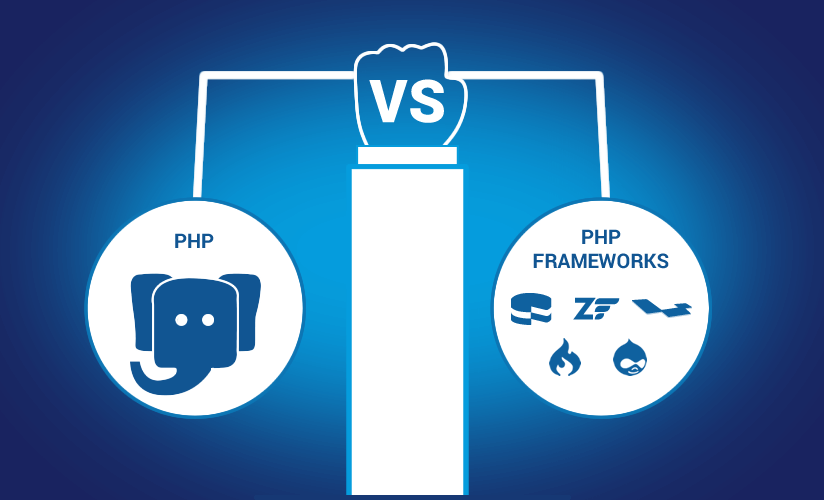Node.js Microservices: A Guide to Building Scalable Apps

Are you ready to unlock the secrets to building agile, scalable applications that cater to the dynamic needs of today’s users? As technology continues to advance, businesses are faced with the daunting task of meeting ever-growing demands while maintaining efficiency and reliability. In this era of constant innovation, microservices architecture has emerged as a game-changer, offering a solution to the complexities of scalability, flexibility, and maintainability.
But what if there was a way to harness the power of microservices even further? Enter Node.js, the dynamic runtime environment that’s revolutionizing the way we approach software development. In this guide, we’ll take you on a journey into the world of Node.js microservices, where you’ll discover how this cutting-edge technology can transform your application development process.
Join us as we delve deep into the intricacies of Node.js microservices, uncovering their unparalleled benefits, exploring implementation strategies, and unveiling best practices for building scalable, resilient apps that stand the test of time. Whether you’re a seasoned developer or a curious newcomer, this guide is your roadmap to success in the fast-paced world of modern software development. Get ready to elevate your applications to new heights with Node.js microservices.
What are Microservices?
Microservices represent a modern architectural paradigm for designing and implementing software applications. Unlike traditional monolithic architectures where an application is built as a single, tightly integrated unit, microservices architecture decomposes an application into a collection of small, independently deployable services. Each service encapsulates a specific business capability and communicates with other services through well-defined APIs.
At the heart of microservices architecture lies the principle of modularity. By breaking down an application into smaller, self-contained services, teams can focus on developing and maintaining individual components independently. This modular approach promotes agility, allowing teams to iterate quickly, deploy changes without impacting other parts of the system, and scale services horizontally as demand grows.
Key characteristics of microservices include
- Loose Coupling: Microservices are loosely coupled, meaning they have minimal dependencies on other services. This allows teams to develop, deploy, and scale services independently, promoting autonomy and reducing the risk of system-wide failures.
- Independently Deployable: Each microservice is a standalone unit that can be deployed independently of other services. This enables continuous delivery practices, where updates and new features can be rolled out to production without disrupting the entire application.
- Polyglot Persistence: Microservices architecture allows teams to choose the most appropriate technology stack for each service based on its requirements. This flexibility, known as polyglot persistence, enables teams to leverage different databases, programming languages, and frameworks to optimize performance and maintainability.
- Resilience and Fault Isolation: Isolating services in microservices architecture enhances resilience by minimizing the impact of failures. If one service experiences a failure, it doesn’t cascade to other services, ensuring that the application remains operational. Additionally, microservices can implement fault tolerance mechanisms such as retry logic, circuit breakers, and graceful degradation to handle failures gracefully.
- Scalability: Microservices architecture enables horizontal scalability, allowing teams to scale individual services independently based on demand. This elasticity ensures that resources are allocated efficiently and can be adjusted dynamically to accommodate fluctuations in traffic or workload.
- API-based Communication: Microservices communicate with each other via well-defined APIs, typically using lightweight protocols such as HTTP/REST, gRPC, or message queues. This decoupled communication enables services to evolve independently, as long as they maintain compatibility with the API contract.
Why Node.js for Microservices?

Node.js is a compelling choice for building microservices due to its unique features and characteristics that align well with the requirements of microservices architecture. Here are several reasons why Node.js is favored for developing microservices:
Non-blocking I/O Model
Node.js is built on a non-blocking, event-driven architecture, which allows it to handle concurrent requests efficiently. This model is particularly advantageous in microservices environments where services need to respond quickly to incoming requests without blocking or waiting for I/O operations. As a result, Node.js can handle high throughput and scale well in scenarios with a large number of concurrent connections, making it ideal for microservices-based applications.
Asynchronous Programming
Asynchronous programming is inherent to Node.js, enabling developers to write non-blocking code using JavaScript’s callback or Promises-based APIs. This programming model is well-suited for microservices that often involve I/O-bound operations such as database queries, file I/O, or network requests. By leveraging asynchronous patterns, Node.js services can handle multiple tasks concurrently, maximizing resource utilization and responsiveness.
Single-threaded Event Loop
Node.js’s single-threaded event loop architecture allows it to efficiently manage multiple I/O operations concurrently without the overhead of traditional multi-threading. While Node.js runs on a single thread, its event loop processes asynchronous tasks in a non-blocking manner, ensuring that the application remains responsive even under heavy loads. This lightweight execution model makes Node.js highly efficient for microservices, reducing overhead and resource consumption compared to traditional multi-threaded environments.
Rich Ecosystem and Libraries
Node.js has a vibrant ecosystem with a vast selection of libraries, modules, and frameworks that streamline development and enhance productivity. Frameworks like Express.js, Fastify, and Nest.js provide robust foundations for building RESTful APIs and web services, while libraries like Axios and Fetch facilitate HTTP communication with external services. Additionally, Node.js’s package manager, npm, offers access to a wealth of third-party packages, enabling developers to leverage existing solutions for common microservices challenges such as authentication, logging, and caching.
Developer Familiarity
JavaScript, the language of Node.js, is widely used and familiar to many developers, making it accessible for building microservices. With a large community and extensive resources available, developers can quickly ramp up on Node.js and leverage their existing JavaScript skills to build scalable and maintainable microservices. Moreover, Node.js’s consistent syntax and tooling contribute to a smoother development experience, reducing the learning curve for teams adopting microservices architecture.
Containerization and Cloud-Native Support
Node.js integrates seamlessly with containerization technologies such as Docker and container orchestration platforms like Kubernetes. Containerizing Node.js microservices enables lightweight, portable deployments and simplifies the management of dependencies and runtime environments. Additionally, Node.js is well-suited for cloud-native architectures, allowing microservices to leverage cloud services, auto-scaling, and serverless computing platforms for enhanced scalability and resilience.
Benefits of Node.js Microservices

Node.js microservices offer a myriad of benefits that make them an attractive choice for building scalable and resilient applications. Let’s delve deeper into these benefits:
Scalability
Node.js’s asynchronous and event-driven architecture makes it inherently scalable, allowing microservices to handle large volumes of concurrent requests efficiently. By leveraging non-blocking I/O operations, Node.js can serve multiple clients simultaneously without being blocked by long-running tasks. This scalability enables applications to easily scale horizontally by adding more instances of microservices, ensuring responsiveness and reliability under varying workloads.
Flexibility
Microservices architecture promotes modularity and decoupling, enabling teams to develop, deploy, and scale individual services independently. With Node.js, developers have the flexibility to choose the most suitable technology stack, libraries, and frameworks for each microservice based on its specific requirements. This flexibility fosters innovation, accelerates development cycles, and allows teams to adopt new technologies or upgrade dependencies without affecting the entire application.
Resilience
Node.js microservices enhance the resilience of applications by isolating failures and minimizing their impact on the overall system. In microservices architecture, if one service encounters a failure or experiences degraded performance, it does not propagate to other services, ensuring that the application remains operational. Additionally, Node.js’s built-in clustering capabilities and fault tolerance mechanisms enable microservices to recover from failures gracefully, maintaining availability and reliability.
Performance
Node.js’s lightweight runtime and single-threaded event loop model contribute to high-performance microservices. By efficiently managing I/O operations and avoiding thread contention, Node.js minimizes latency and maximizes throughput, making it suitable for latency-sensitive applications such as real-time messaging, IoT, and streaming services. Furthermore, Node.js’s low memory footprint and fast startup times enable microservices to scale rapidly and respond promptly to incoming requests.
Developer Productivity
Node.js’s familiar JavaScript syntax, extensive ecosystem of libraries and frameworks, and rich tooling ecosystem enhance developer productivity when building microservices. With Node.js, developers can leverage their existing JavaScript skills to write backend code, reducing context switching and accelerating development cycles. Additionally, Node.js’s modular architecture and support for npm (Node Package Manager) enable teams to reuse code, share components, and collaborate effectively, further streamlining development efforts.
Operational Efficiency
Node.js microservices simplify operational tasks such as deployment, monitoring, and maintenance. With containerization technologies like Docker and orchestration platforms like Kubernetes, Node.js microservices can be packaged into lightweight, portable containers and deployed consistently across different environments. Furthermore, Node.js’s built-in support for metrics instrumentation, logging frameworks, and monitoring tools facilitate observability and troubleshooting, enabling teams to monitor the health, performance, and dependencies of microservices effectively.
Implementation Strategies for Node.js microservices

Implementing Node.js microservices requires careful planning, design, and execution to ensure the success of the architecture. Here are some key implementation strategies to consider:
Service Decomposition
- Identify Business Capabilities: Analyze your application’s functionality and identify distinct business capabilities or domain areas. For example, an e-commerce application might have separate microservices for user management, product catalog, order processing, and payment processing.
- Decompose into Microservices: Once you’ve identified business capabilities, decompose your application into individual microservices, with each microservice responsible for a specific domain or functionality. This decomposition should be guided by the Single Responsibility Principle (SRP), ensuring that each microservice has a clear and well-defined purpose.
- Define Clear Boundaries: Establish clear boundaries between microservices and define well-defined APIs for communication between them. This helps to minimize dependencies and promotes loose coupling, allowing microservices to evolve independently without impacting each other.
Communication Protocols
- Choose Communication Protocols: Evaluate different communication protocols based on the requirements of your application. For synchronous communication, HTTP/REST is a common choice, offering simplicity and compatibility with web standards. Alternatively, gRPC provides efficient, high-performance communication using Protocol Buffers. For asynchronous communication, message queues like RabbitMQ or Apache Kafka offer reliable message delivery and decouple producers from consumers.
- Consider Trade-offs: Consider trade-offs between synchronous and asynchronous communication based on factors such as latency, reliability, and consistency requirements. Synchronous communication is simpler to implement but may introduce tight coupling between services, while asynchronous communication offers better scalability and fault tolerance but requires handling eventual consistency and message delivery guarantees.
Data Management
- Choose Data Management Strategies: Select appropriate data management strategies based on the access patterns and scalability requirements of your application. For shared data access, consider using a distributed database like MongoDB or Cassandra. Alternatively, for data isolation and autonomy, each microservice can have its own database, with data replication and synchronization mechanisms to ensure consistency.
- Implement Data Partitioning: Implement data partitioning strategies to distribute data across microservices and minimize dependencies. Techniques such as sharding, partitioning, or event sourcing can be used to partition data based on business logic or access patterns, ensuring that each microservice operates independently without contention for shared resources.
Deployment and Orchestration
- Containerization with Docker: Containerize your Node.js microservices using Docker, packaging each service along with its dependencies and runtime environment into a lightweight, portable container. Docker containers provide consistency and isolation, ensuring that microservices behave consistently across different environments.
- Orchestration with Kubernetes: Use Kubernetes for orchestrating containerized deployments of Node.js microservices. Kubernetes automates deployment, scaling, and management of containerized applications, providing features such as service discovery, load balancing, auto-scaling, and rolling updates. Kubernetes ensures high availability and resilience by distributing microservices across multiple nodes and handling failures gracefully.
- CI/CD Pipeline: Implement a CI/CD pipeline to automate the deployment process and enable continuous integration and delivery of microservices. CI/CD pipelines automate tasks such as building, testing, and deploying microservices, ensuring rapid and reliable delivery of new features and updates.
Monitoring and Observability
- Instrumentation and Metrics: Instrument your Node.js microservices with monitoring and metrics instrumentation to track key performance indicators (KPIs) such as response times, error rates, and throughput. Use tools like Prometheus to collect, store, and query metrics from microservices, and Grafana to visualize performance data through dashboards.
- Logging and Tracing: Implement logging frameworks to capture and aggregate logs from Node.js microservices, providing visibility into system behavior and facilitating troubleshooting. Use distributed tracing tools like Jaeger or Zipkin to trace requests across microservices and identify performance bottlenecks or latency issues.
Security and Authentication
- Authentication Mechanisms: Implement robust authentication mechanisms to secure access to microservices and protect sensitive data. Utilize standards-based protocols such as OAuth 2.0 or OpenID Connect for authentication and authorization, allowing clients to authenticate securely and obtain access tokens for accessing protected resources.
- Encryption and Transport Security: Use encryption protocols such as TLS/SSL to secure communication between microservices and external clients. Ensure that sensitive data is encrypted in transit and at rest, preventing eavesdropping and unauthorized access to data.
Error Handling and Resilience
- Robust Error Handling: Implement robust error handling mechanisms to handle failures gracefully and prevent cascading failures across microservices. Use try-catch blocks or error middleware to capture and handle exceptions within microservices, returning appropriate error responses to clients.
- Fault Tolerance Patterns: Employ fault tolerance patterns such as retry logic, circuit breakers, and exponential backoff to handle transient errors and mitigate service degradation. Implement circuit breakers to monitor service health and automatically open or close circuits based on error rates or latency thresholds.
Performance Optimization
- Performance Profiling: Profile the performance of Node.js microservices to identify bottlenecks and optimize resource usage. Use tools like Node.js’s built-in profiler or third-party profiling tools to analyze CPU usage, memory consumption, and event loop latency.
- Caching Strategies: Implement caching strategies to cache frequently accessed data and reduce redundant computations, improving overall system performance. Use in-memory caches like Redis or Memcached to cache data at the application level or implement HTTP caching to cache responses at the proxy or CDN level.
By following these detailed implementation strategies, organizations can effectively design, develop, and deploy Node.js microservices that are scalable, resilient, and maintainable, enabling them to build robust and flexible applications that meet the evolving needs of their users and business.
Best Practices for Building Scalable Apps with Node.js Microservices

Building scalable apps with Node.js microservices requires adhering to best practices that promote flexibility, resilience, and efficiency. Let’s explore these best practices comprehensively:
Design for Scalability
- Modular Architecture: Break down your application into small, focused microservices, each responsible for a specific domain or functionality. This modular approach enables independent scaling of microservices based on demand.
- Horizontal Scaling: Design microservices to scale horizontally by adding more instances or replicas to handle increased load. Utilize containerization and orchestration platforms like Docker and Kubernetes to automate scaling and ensure consistent deployment across environments.
- Statelessness: Design microservices to be stateless wherever possible, storing session data and state externally (e.g., in a database or cache). Stateless services are easier to scale since they can be replicated without worrying about maintaining session affinity.
Optimize Performance
- Asynchronous Operations: Leverage Node.js’s asynchronous, non-blocking I/O model to handle concurrent requests efficiently. Utilize asynchronous patterns like callbacks, Promises, or async/await to perform I/O-bound operations without blocking the event loop.
- Caching: Implement caching strategies to cache frequently accessed data and reduce latency. Use in-memory caches like Redis or Memcached to store transient data or results of expensive computations, improving response times and reducing load on downstream services.
- Optimize Dependencies: Minimize dependencies and keep dependencies up-to-date to ensure optimal performance. Regularly review and update dependencies using tools like npm audit to identify security vulnerabilities or outdated packages.
Ensure Fault Tolerance and Resilience
- Retry Mechanisms: Implement retry logic for transient errors to mitigate service disruptions caused by temporary failures. Configure exponential backoff strategies to gradually increase the interval between retries, preventing overwhelming downstream services.
- Circuit Breaker Pattern: Implement circuit breakers to monitor the health of downstream services and prevent cascading failures. Open the circuit when a service fails or becomes unresponsive, directing traffic away from the failing service until it recovers.
- Graceful Degradation: Design microservices to gracefully degrade functionality when dependent services are unavailable or degraded. Provide fallback mechanisms or alternative workflows to maintain basic functionality and minimize user impact during service disruptions.
Manage Distributed Systems Complexity
- Service Discovery: Implement service discovery mechanisms to facilitate dynamic service registration and discovery in distributed environments. Use service registries like Consul or etcd, or utilize Kubernetes service discovery features to automatically locate and communicate with microservices.
- Distributed Tracing: Implement distributed tracing to monitor and analyze the flow of requests across microservices. Use tools like Jaeger or Zipkin to trace requests, identify performance bottlenecks, and troubleshoot latency issues in distributed systems.
- Event-Driven Communication: Embrace event-driven architectures and asynchronous messaging patterns to decouple services and improve scalability. Use message brokers like RabbitMQ or Kafka to publish and consume events, enabling loosely coupled communication between microservices.
Implement DevOps Practices
- Continuous Integration/Continuous Deployment (CI/CD): Establish CI/CD pipelines to automate testing, building, and deployment of microservices. Implement automated tests (unit tests, integration tests, end-to-end tests) to ensure code quality and prevent regressions before deployment.
- Infrastructure as Code (IaC): Use infrastructure as code tools like Terraform or CloudFormation to define and provision infrastructure resources (e.g., containers, virtual machines, networking) in a reproducible and automated manner. Infrastructure as code ensures consistency and repeatability across environments.
- Monitoring and Alerting: Implement robust monitoring and alerting mechanisms to detect and respond to performance issues or anomalies in real-time. Use monitoring tools like Prometheus, Grafana, or Datadog to collect metrics, visualize performance data, and set up alerts for critical events or thresholds.
Security and Compliance
- Authentication and Authorization: Implement secure authentication and authorization mechanisms to protect microservices and data. Use standards-based protocols like OAuth 2.0 or JWT for user authentication and authorization, and enforce access controls based on roles and permissions.
- Data Encryption: Encrypt sensitive data at rest and in transit to prevent unauthorized access. Use encryption protocols like TLS/SSL to secure communication between microservices and external clients, and encrypt data stored in databases or caches using encryption algorithms like AES.
Documentation and Communication
- API Documentation: Provide comprehensive documentation for APIs exposed by microservices, including endpoints, request/response formats, authentication requirements, and usage examples. Use tools like Swagger or OpenAPI to generate and maintain API documentation automatically.
- Team Collaboration: Foster communication and collaboration between development, operations, and other cross-functional teams involved in building and maintaining microservices. Establish clear communication channels, conduct regular stand-ups and retrospectives, and encourage knowledge sharing to ensure alignment and shared understanding.
By following these best practices, organizations can build scalable, resilient, and maintainable applications with Node.js microservices, enabling them to meet the demands of modern distributed systems effectively.
Conclusion
Node.js microservices offer a powerful solution for building scalable, resilient, and flexible applications in today’s fast-paced environment. By embracing microservices architecture and leveraging Node.js’s strengths, teams can effectively address the challenges of scalability, performance, and maintainability while delivering value to users. With careful planning, thoughtful design, and adherence to best practices, organizations can unlock the full potential of Node.js microservices and build robust applications that meet the evolving needs of their users and business. For expert guidance and support in implementing Node.js microservices for your business, contact Imenso Software today and take your application to the next level.
Want more information about our services?
Similar Posts

Core PHP vs PHP Frameworks
PHP has been a cornerstone of web development for a long time. The LAMP stack (Linux, Apache, MySQL, and PHP) is still a frequently used part of web development, and it is something that people tend to learn in computing courses in college. Today, there are many other frameworks that web applications can be built […]...

Biggest Offshore Development Problems (And How to Solve Them)
For many companies, offshore software is an attractive choice but comes with a unique set of challenges. This is why many professionals advise against software development agencies despite the enticing cost-saving options and faster results. ...

Micro Services Vs Web Services
There are two different architectures for app development, respectively as Micro Services and Web Services. While both of them have some distinct advantages, it is important to know their differences in detail. Let us define, provide details and explain the pros and cons of both of these app development architectures....






